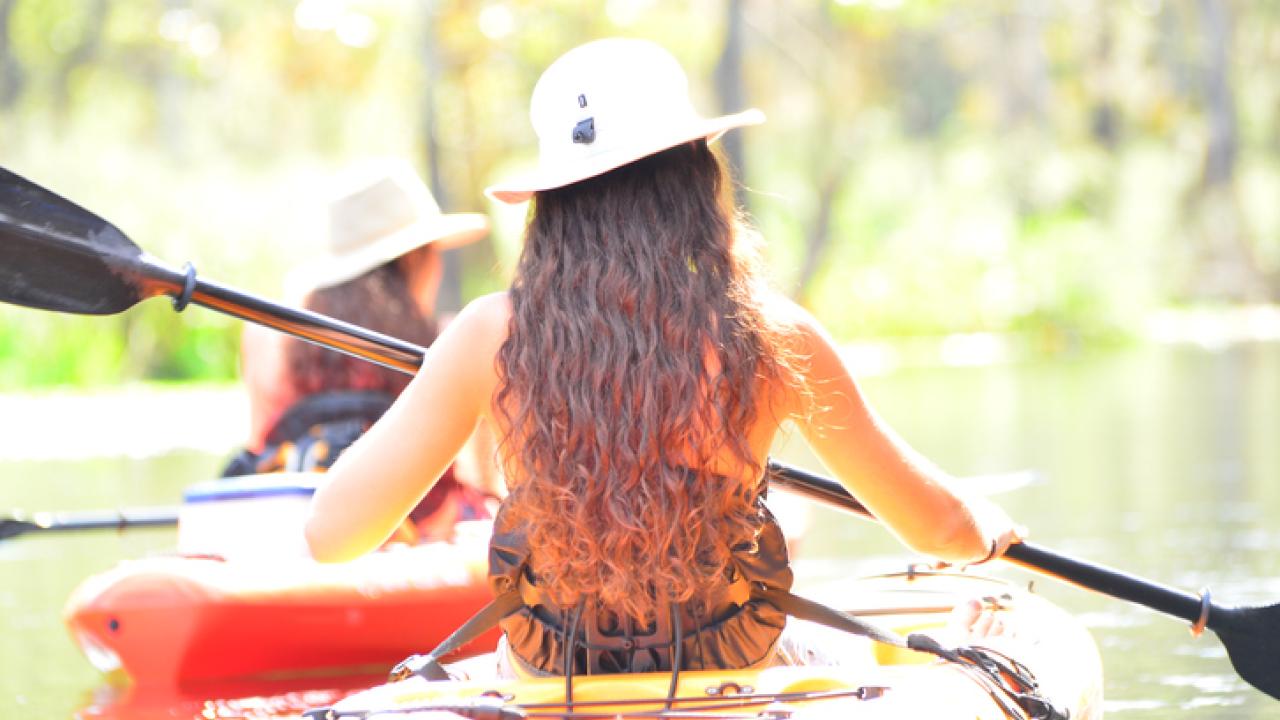November marks Native American Heritage Month, a time to honor and celebrate the Indigenous people of America and reflect upon the many contributions made by Indigenous people. These contributions stem from the innovation and resourcefulness of the people who understood and respected the land they inhabited. The reach of these contributions is felt from the foods we eat to the modes of transportation we use daily and leisurely.
Native healers made major contributions to the medical field. North American tribes’ knowledge of plants and herbs evolved to modern day anesthetics, pain relievers and oral contraceptives. Stoneseed was used as an oral contraceptive by the Shoshone and Navajo tribes. The root of Jimson weed was ground up to make a paste that was applied to external wounds to ease pain. This plant was also ingested by those being treated by native healers to set broken bones. American black willow tea is the reason we have aspirin today. This tea contains salicin, which the body converts to salicylic acid, the active ingredient in aspirin. Capsaicin, found in hot peppers, was used for topical pain relief, and to treat oral pain, tribes made a mouthwash from wildflower goldthread.
Indigenous people’s respect for life and nature was seen in their tradition of not wasting any part of an animal that was hunted. Native Americans used animal bladders and hollow bird bones to inject medications. The Iroquois are credited for creating the baby bottle, made from dried and greased animal guts which served as the base of the bottle. A bird’s quill was used for the nipple. Because of this perspective, we now enjoy the ease of present-day syringes and baby bottles.
Their contributions to the ways in which we care for children are not the only subsistence practices that can be seen in the modern era. Chinampa, also known as a floating garden, is how many Central and South American native people grew their food. Most notable for using this technique are the Aztecs. Additional agricultural contributions can be felt in the many foods we grow and eat. The Indigenous people of North, Central, and South America cultivated corn, beans, squash, potatoes, tomatoes, chile peppers and cacao.
From trees, the Olmecs of Southern Mexico invented rubber. Their source of rubber came from the rubber tree, Ficus elastica, which they would extract latex from and mix with morning glory vine juice to produce rubber. Rubber was then used to make a variety of items such as containers, soles for sandals and balls used in ceremonial games.
Contributions from the Inuit are seen in kayaks and snow goggles. They made kayaks from wood or whalebones and used animal hides to cover these wooden or bone frames. Their use of animal fat made the kayaks waterproof. Snow googles, used to protect their eyes from the sun’s ultraviolet rays, were also made from wood or animal products like bones or leather. In addition to trekking through the freezing terrain with kayaks and snow goggles, Indigenous people also constructed the first structures that aided in crossing mountains.
Suspension bridges were first fashioned by the Indigenous people of South America. Across the Andes region, the Incas built these bridges out of woven grass and animal hair. These well woven structures provided a form of safe passage across rivers and valleys for its people and animals in this mountainous region. Furthermore, these bridges withstood the weight of heavy loads, providing opportunities for commerce with other Native communities. Along the same architectural idea, The Indigenous people of Central America used hammocks made of woven bark to sleep in; suspended between trees, this invention kept sleepers safe from dangerous animals and insects.
The contributions of Native American people are all around us and their innovative breakthroughs continue to be felt. Here are just a few standouts that you should know and read more about (in no particular order).
John Herrington (Chickasaw): Former NASA astronaut
Nicole Aunapu Mann (Wailacki): First Native American woman to go to space
Lori Arviso Alvord (Navajo): Author, first Navajo woman to become a board-certified surgeon
Fred Begay (Navajo, Ute): Nuclear physicist, researcher
Mary Golda Ross (Cherokee): Aerospace engineer who contributed to the development of concepts for interplanetary space travel
Jerry Chris Elliott (Cherokee, Osage): Computer scientist, professor
Bertha "Birdie" Parker Pallan (Abenaki and Seneca): Archaeologist, discovered skull of an extinct species of giant ground sloth that helped further date the appearance of humans in North America
Ella Cara Deloria (Yankton Sioux): Anthropologist, ethnographer and linguist
To learn more about the contributions of Native American Bruins, please visit the UCLA Newsroom.

